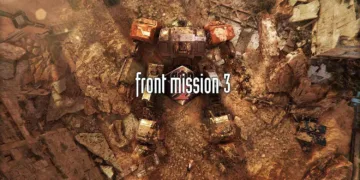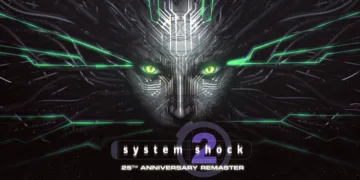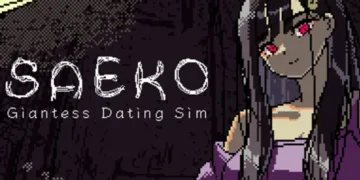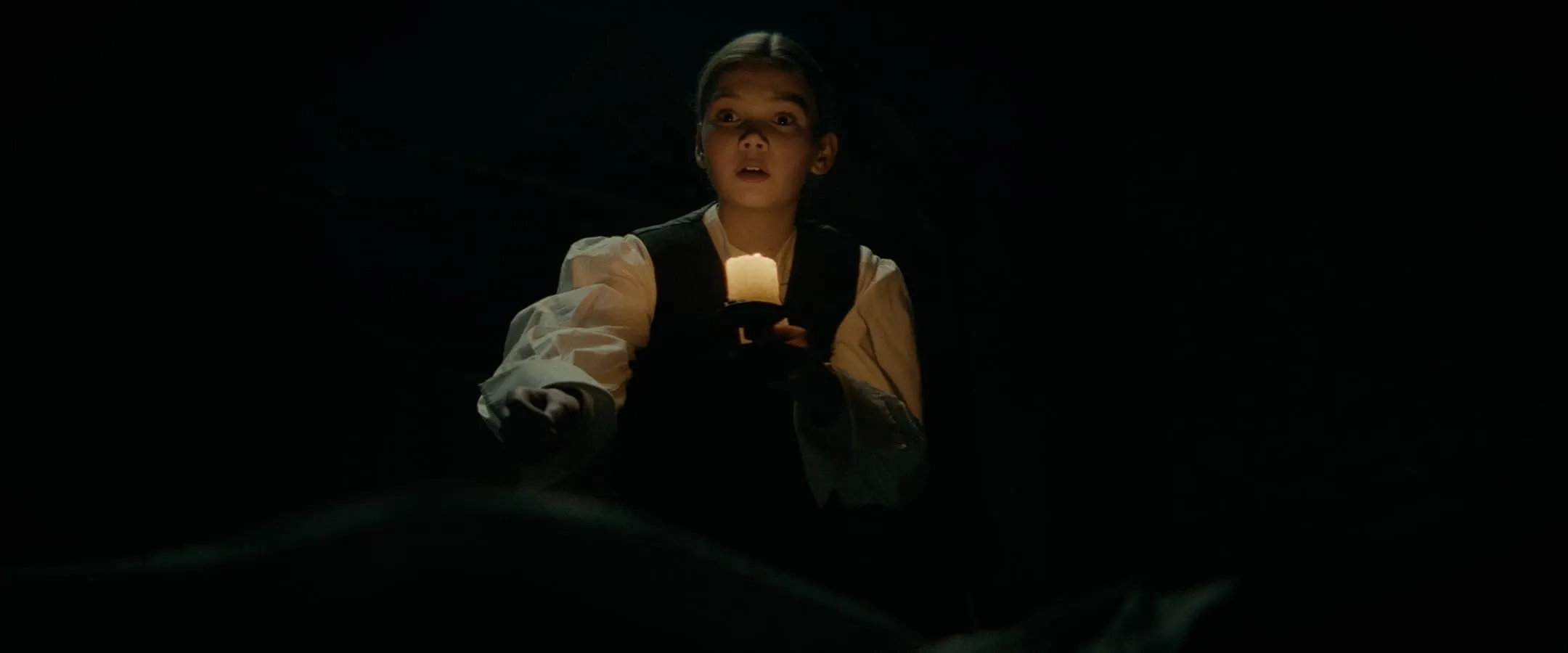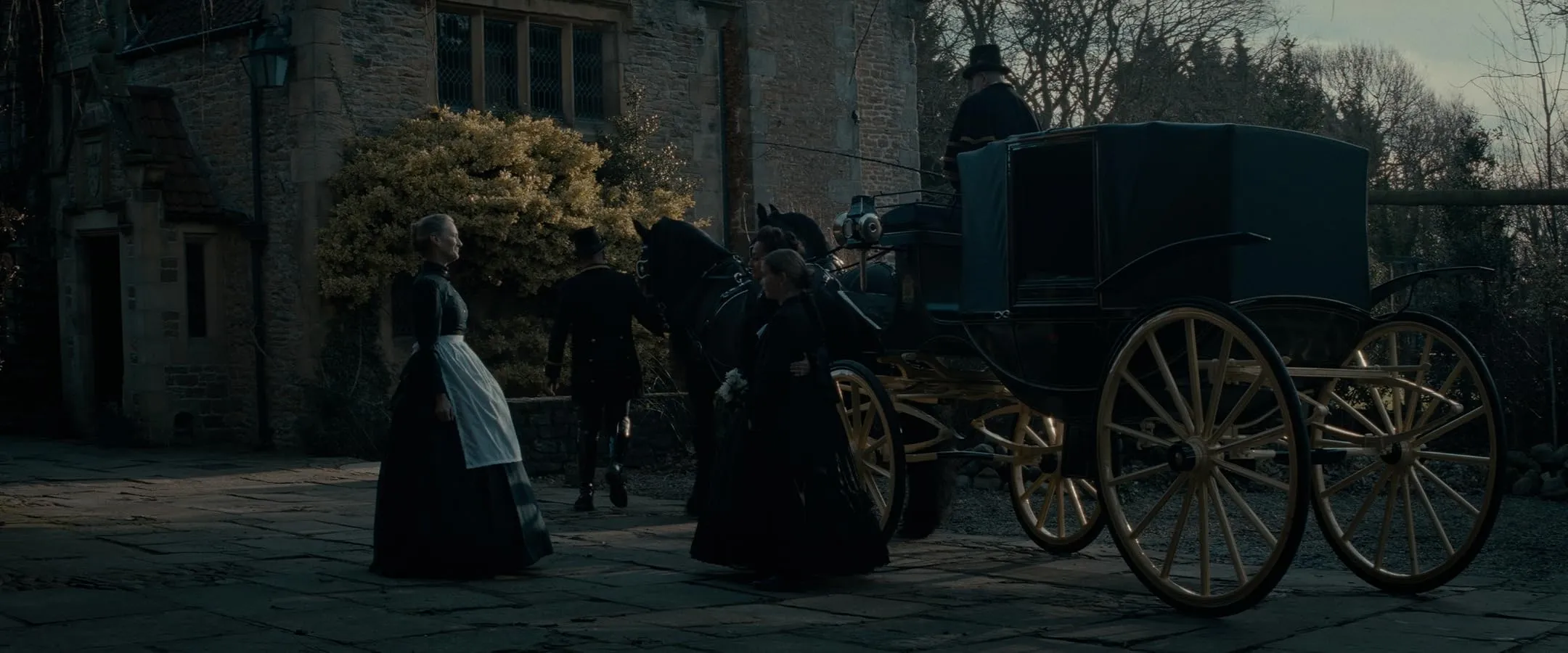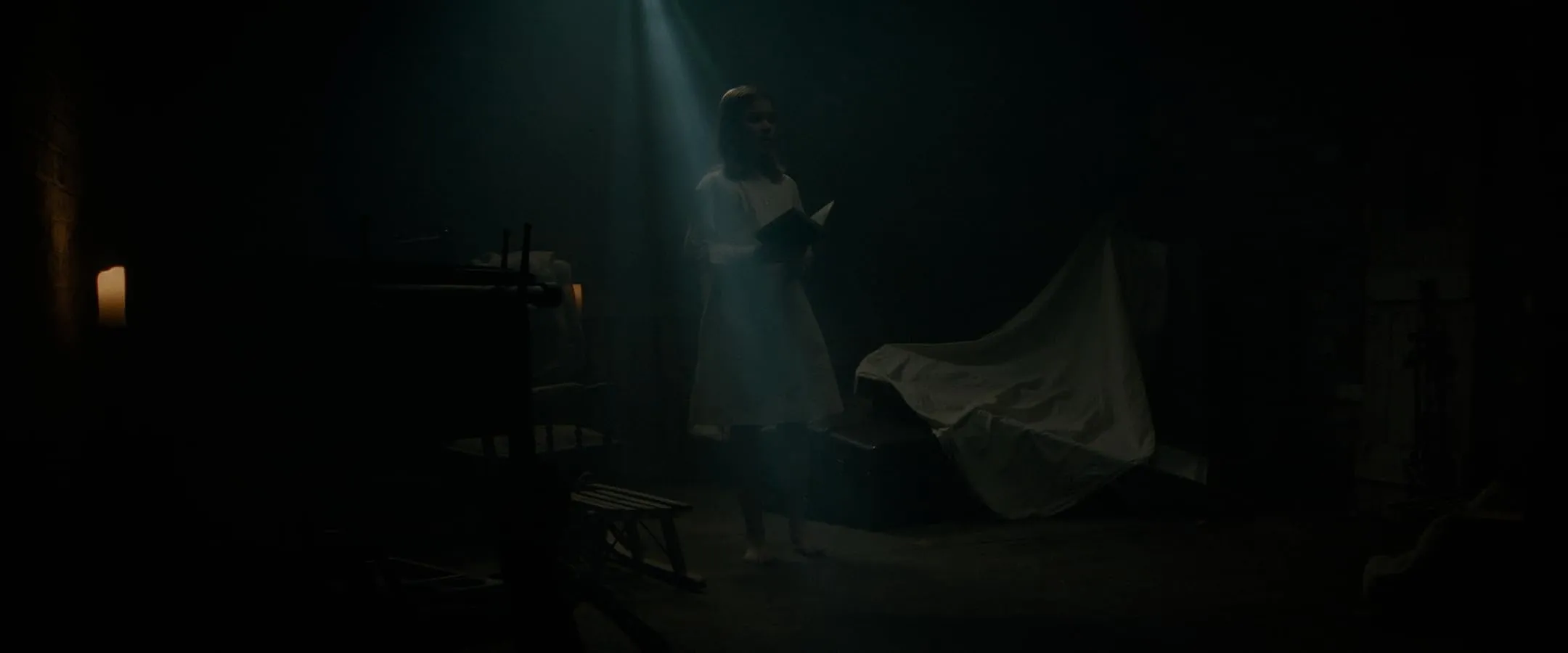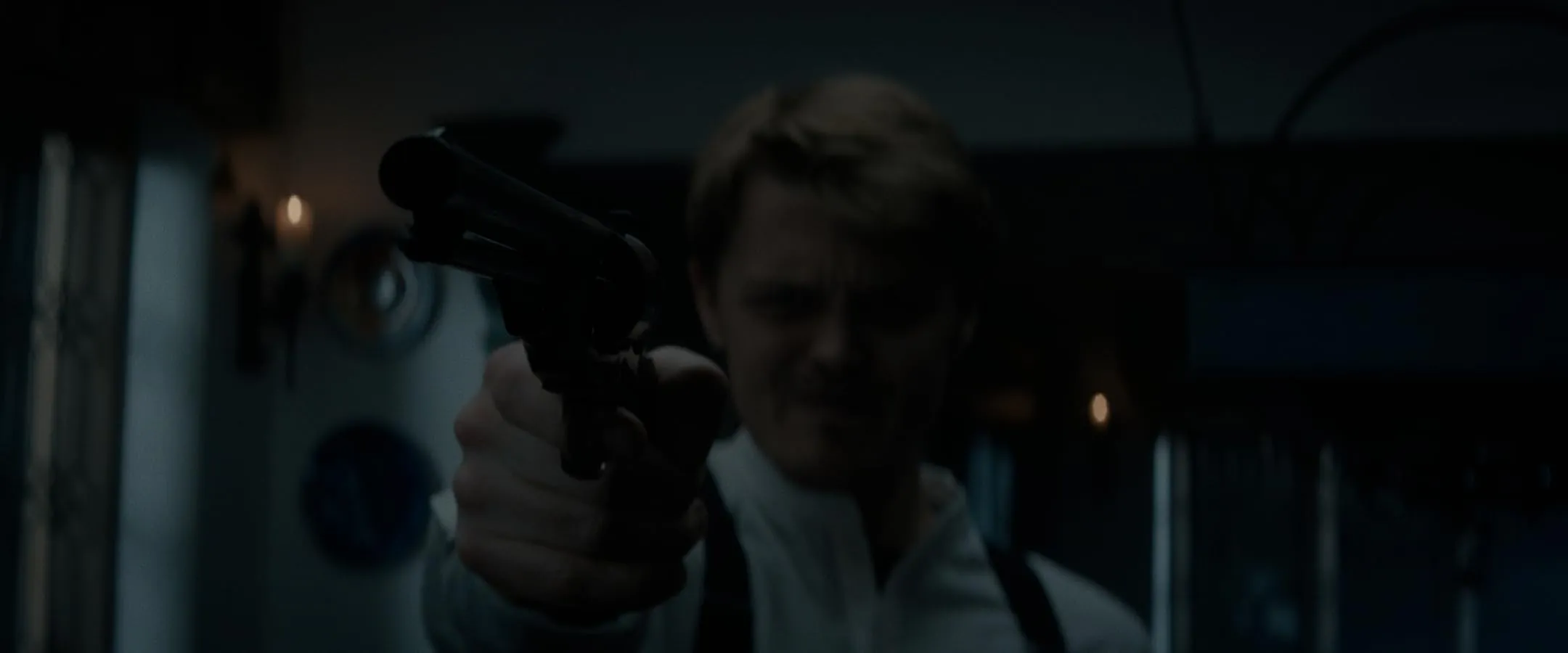In the eerie twilight of 1898, Yorkshire emerges as a bleak canvas where human frailty is cast against the vast unknown. The opening reveals Lord James Abbington, a solitary figure whose body and spirit wane in a setting soaked with despair.
His troubled countenance and deteriorating condition invite the audience to witness a man ensnared in the silent grip of isolation, as a mysterious basement hints at dark secrets waiting to be unearthed.
Soon, the arrival of Lady Grace and her young son Charles disrupts this melancholic solitude. Their presence, driven by the need to settle a crumbling estate and its burdens of debt, stirs latent memories and hidden family truths. Old histories seep from the manor’s creaking walls, revealing fragments of anguish and unresolved misdeeds.
As the narrative unfolds, two threads emerge: the spectral terror lurking beneath the manor and the internal chaos consuming its inhabitants. The film’s deliberate, measured pace mimics the slow toll of time, drawing viewers into a suspense that is both palpable and uncertain.
Pivotal moments—a shadowy confrontation, whispered revelations of familial sins—offer fleeting glimmers of clarity amidst the encroaching gloom, leaving the audience suspended in a state of reflective disquiet.
Echoes of a Fading Epoch
In 1898 Yorkshire, the fabric of time feels tattered by despair and an unyielding chill. The era’s rigid customs and social mores are etched into every cobblestone, each rusted signpost, and the sprawling countryside that seems to whisper secrets of bygone sorrows.
This period, steeped in its own rituals and mourning, casts a pall over the landscape, wrapping the viewer in a palpable sense of abandonment and inevitability.
The manor emerges as an entity of its own—a relic of both decay and once-regal grandeur. Its halls, marked by extensive corridors that wind into darkness, hold rooms shrouded in mystery and echoes of past transgressions.
The physical deterioration of its ornate architecture contrasts sharply with vestiges of opulence, creating an almost tangible tension that vibrates through its very walls. This interplay between disrepair and faded magnificence mirrors the inner torment of its inhabitants, evoking images of a soul battered by time.
The visual mood is wrought through a careful interplay of illumination and shadow, where natural light struggles against the creeping gloom. Flickering lamplight and sporadic bursts of daylight skim across surfaces, revealing fractured details of carved wood and stone that bear silent witness to lingering anguish.
The ambient glow and stark contrasts paint a scene where darkness is not merely a backdrop but an ever-present force that echoes the characters’ hidden turmoil. Each frame feels imbued with an uncertain pulse, inviting the observer to reflect upon the weight of history and the enduring silence of the forgotten.
Shadows of the Soul in Tainted Kinship
Lady Grace emerges as a figure ensnared by sorrow, burdened with the weight of loss and a stark, pressing need to salvage a crumbling legacy. Her every step seems haunted by memories that twist within, as if her grief were a living specter that bleeds into her financial struggles and internal conflicts.
In contrast, young Charles wanders with an isolation that is palpable, forming an uncanny bond with the entity lurking beneath the manor—a connection that speaks of silent yearnings and the search for understanding in a world that has long since forsaken him.
Lord James, though present only in fragments of the narrative, leaves an indelible imprint; his abrupt, tragic exit from life echoes as a cautionary note amid the unfolding tragedy. His brief presence resonates in the lingering silence of empty corridors and lost opportunities, a reminder of the fragility of existence.
Alongside him stands Mrs. Gray, whose steady presence provides a subtle counterpoint to the unfolding despair. Her quiet determination and unspoken empathy ground the narrative, offering moments of clarity amid the haze of personal torment.
Family dynamics here are strained, with silent resentments and unvoiced grievances filling the spaces between formal interactions. The tension with a disapproving relative intensifies an already charged atmosphere, where each character’s inner turmoil reflects on the others like fractured mirrors.
The interplay of these human elements invites contemplation on the nature of loneliness and the burdens we carry, each relationship a thread in the intricate web of sorrow and hope.
The Echoing Depths of Inner Darkness
In this work, grief emerges as a weighty specter that haunts both individual souls and entire households. Lady Grace’s quiet torment and the familial burden of sorrow are mirrored in the oppressive atmosphere of the estate.
Her internal struggle, marked by silent suffering and secret tears, becomes a vivid symbol of repressed emotion, its shadows stretching into the physical space like unseen scars etched into cold stone.
The film presents a dual specter—a creature born of both the supernatural and the inner workings of a troubled mind. The monster lurking in the depths is not merely an external threat; it reflects the characters’ hidden despair and unresolved anguish.
This figure, ambiguous in its manifestations, leaves the viewer questioning whether the real terror lies in the tangible or in the psyche’s dark corners. Its presence blurs the line between eerie apparitions and the torment that festers within, hinting at a world where horror is as much a state of being as it is an external force.
Societal pressures and the strict confines of class leave their mark on every interaction. The rigid social structures of the era impose a veneer of decorum over deep-seated insecurities.
In this confined space, expectations and inherited reputations tighten like a noose, forcing characters into roles that stifle open expression. The film’s portrayal of these subtle dynamics offers a muted critique of an age where vulnerability was met with disdain, leaving personal torment to fester unseen.
Visions in Gloom: Crafting the Unseen
Sophie Osbourne’s method of weaving timeworn gothic sensibilities with contemporary visual language invites us into a world where antiquity and modernity coalesce.
Her direction employs a measured cadence, allowing each fragment of the narrative to unfurl gradually, as if the darkness itself were revealing hidden truths at its own pace.
The slow unveiling of pivotal moments creates a rhythm that mirrors the steady drip of existential melancholy, inviting viewers to linger in the space between revelation and uncertainty.
The cinematography plays a pivotal role in this unfolding mystery. Shadows are not merely absences of light; they are carefully sculpted entities that trace the contours of fear and longing. The interplay of stark, natural illumination with deep, enveloping darkness crafts a visual language that speaks of both decay and hope.
The historic manors of Yorkshire, with their labyrinthine corridors and weathered facades, become silent narrators of an era long past, imbuing each frame with an atmospheric weight that is almost palpable.
In parallel, the production design meticulously reconstructs an era through set choices and period-accurate details, from the finely crafted costumes to the intricate decor that adorns every room.
Yet, amid these authentic relics of history, the CGI monster stands out with its palpable artificiality—a jarring note in an otherwise harmonious composition of visual cues. Its digital texture, while striving for terror, sometimes undercuts the immersive ambiance the rest of the film so carefully nurtures.
Echoes of Sound in Shadow
The score breathes life into the film’s spectral environment, its notes a slow current that drifts through each scene, evoking a mood of quiet, unsettling apprehension.
The music unfolds with a deliberate cadence that mirrors the characters’ inner strife, punctuating moments of silent tension with gentle bursts of melancholy. Each auditory cue is designed to heighten the weight of unspoken sorrows, transforming the soundscape into a silent interlocutor that communicates the unuttered depths of despair.
Editing choices mirror this measured pace. Transitions between scenes are meticulously crafted, guiding the viewer through a series of lingering images that seem to suspend time.
Though this approach intensifies the emerging horror, there are instances where the languid pace risks veering into tedium, a reminder of the delicate balance between sustained suspense and narrative momentum.
The film’s audio and visual elements are intertwined with precision. The alignment of ambient sounds with carefully composed frames invites the viewer into a realm where every echo and shadow contributes to a heightened sensory experience.
This union of sound and vision creates an environment that is both immersive and reflective, inviting contemplation on the nature of silence, absence, and the enigmatic pulse of life itself.
Echoes of a Haunted Legacy
The film crafts a space where shadows and loss merge into a palpable presence. Its atmospheric world, drawn from a decaying era, confronts us with the weight of solitude and unspoken sorrow. The careful rendering of historic settings and gothic details invites a quiet reflection on the nature of despair.
Each meticulously composed frame mirrors the internal void of its characters, offering a subtle inquiry into our own moments of isolation. Yet, there are missteps: a languid tempo and a creature that struggles to evoke true terror undercut the work’s emotional ambitions.
These imperfections reveal the tension between visionary storytelling and technical execution, questioning whether the dream of perfect horror can ever be attained.
The narrative’s interplay of repressed yearning and physical manifestation of dread lingers in the mind, provoking a meditation on the transient nature of hope amid pervasive darkness. Its somber vision silently challenges us to question existence.
The Review
The Monster Beneath Us
A film that invites reflection through its haunting gothic setting and earnest exploration of grief. Its well-crafted atmosphere and period details capture a bygone melancholy, even as its sluggish pace and unconvincing creature diminish its impact. The narrative lingers, provoking quiet introspection amid technical shortcomings.
PROS
- Captivating gothic atmosphere
- Rich period details
- Thoughtful exploration of grief and isolation
CONS
- Slow pacing in parts
- Underwhelming execution of the central monster
- Occasional narrative ambiguity

































